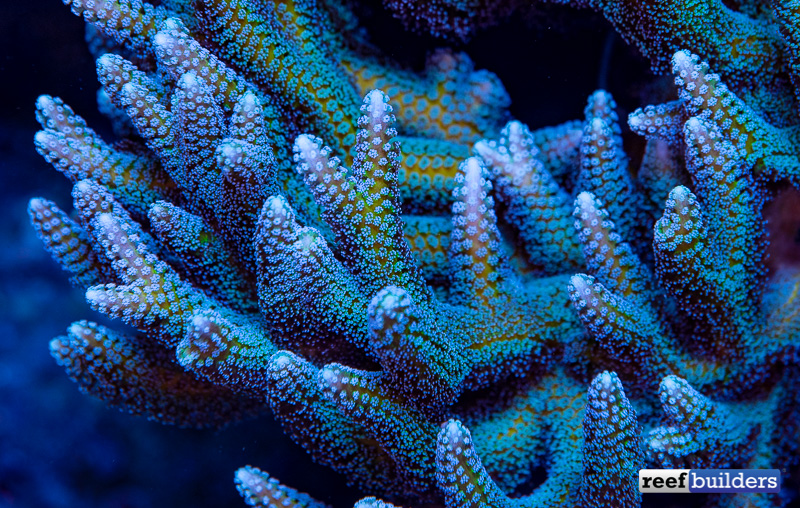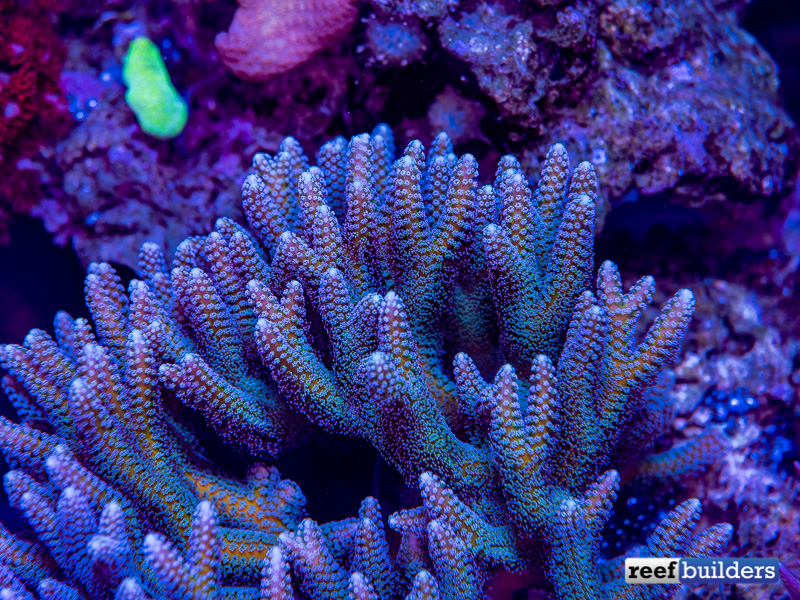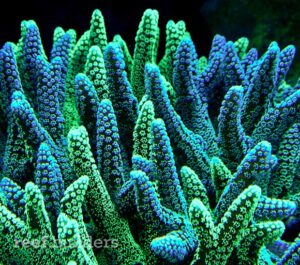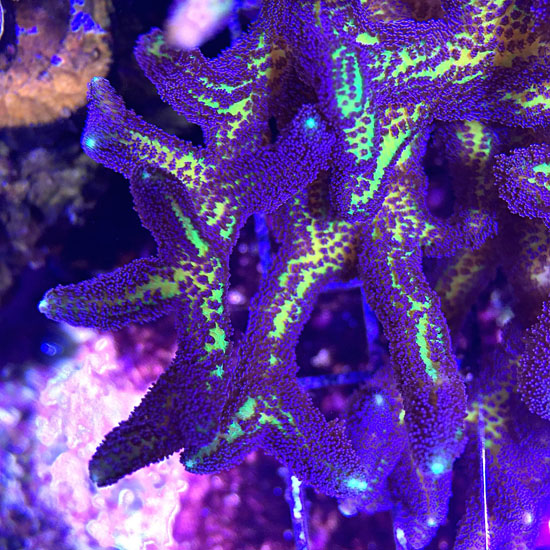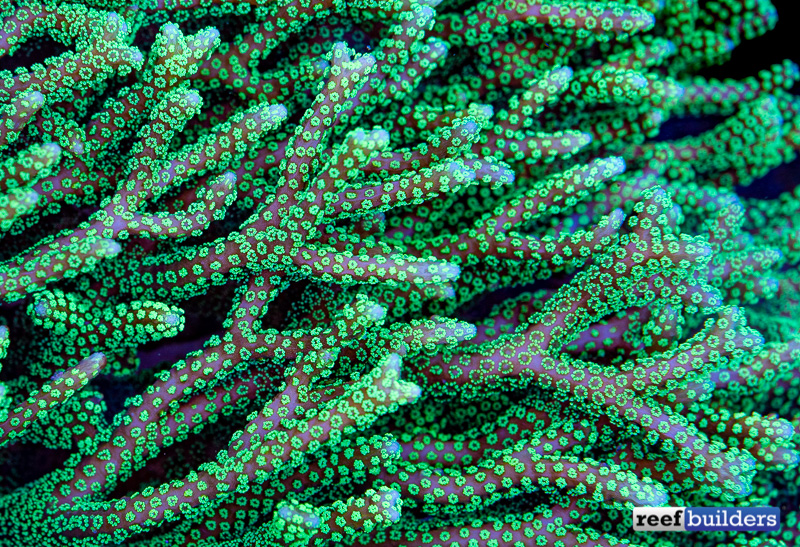The Lazy Blue Zing birdnest is one of the most unique corals in the history of the aquarium hobby as it is the first confirmed cross between two aquarium strains of SPS corals. The hybrid birdnest was the result of an aquarium spawning event between the thick branched Bird of Paradise and the thinner branched metallic green polyp birdnest (which doesn’t have a given hobby name) – it’s a borderline miracle that the episode was a mostly an accident.
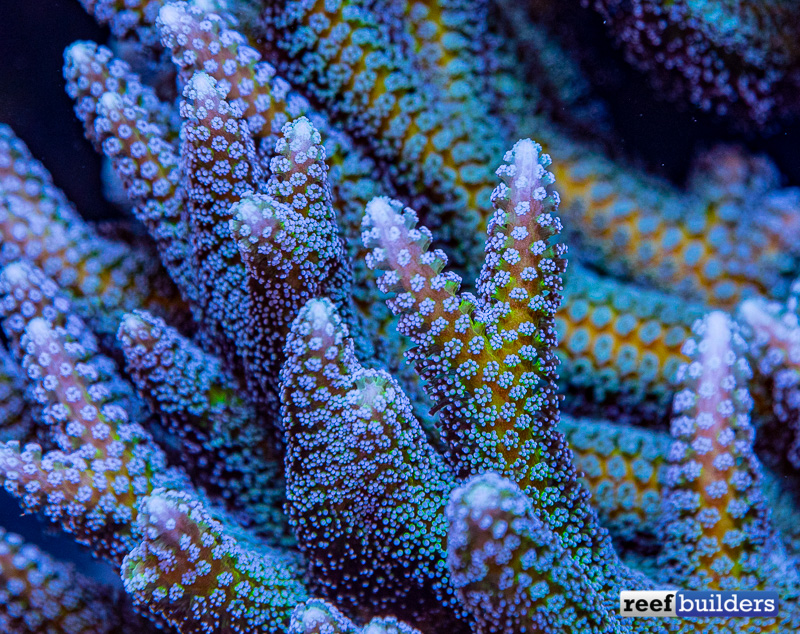
As a big fan of the SPS coral with neat rows of corallites, hence the name of the Seriatopora genus, we’ve always been fascinated by the uniquely ‘symmetrical’ distribution of polyps and the fast growing, sharp pointed branches that grow into very neat, symmetrical colonies endowed with a unique palette of colors. We first learned of this unique hybrid Seriatopora about one year ago and we were delighted to learn that frags of this coral were already available for us to start growing and playing with.
We acquired two large frags of the Blue Zing from Lazy’s House of Coral and we were very eager to observe how this coral compared to its widely available parent corals, and especially how its growth and coloration would reflect the Bird of Paradise and the green polyp Birdnest. With two samples to experiment with we planted the Lazy Blue Zing in medium and high light environments right next to its parents and it has been absolutely fascinating to see how this Seriatopora cross demonstrates features of the other two birdnest strains, while also exhibiting an appearance which is unique to the Blue Zing.
The two parents strains of the Lazy Blue Zing, a green polyp birdnest on the left, and the Bird of Paradise on the right – common photos above, and side by side shots of our own examples below.
It’s hard to be certain about precisely which species of Seriatopora the parents of the Blue Zing represent but we have a degree of confidence that the the pointed thick branches of the Bird of Paradise and the thin branching, blunt tips of the metallic green polyp birdnest are not the same species. One of the first things we wanted to see is whether the Blue Zing would exhibit some kind of ‘hybrid vigor’ seen in hybrids of many other animals and while we only have two examples, the Blue Zing grew noticeably faster than colonies of the parent strains which started out at a similar size, or occupied volume of the combined branches.
With a combination of branch and polyp colors to draw from its parents the Lazy Blue Zing has a diverse ‘repertoire’ that it can exhibit in an aquarium and it’s somewhat surprising how these are stimulated. We’ve observed that unlike the blue or green polyps of its parents the Blue Zing shows almost totally white polyps under very bright lighting, but under lower intensities the white polyps are localized at the tips and gradually change color down the branch.
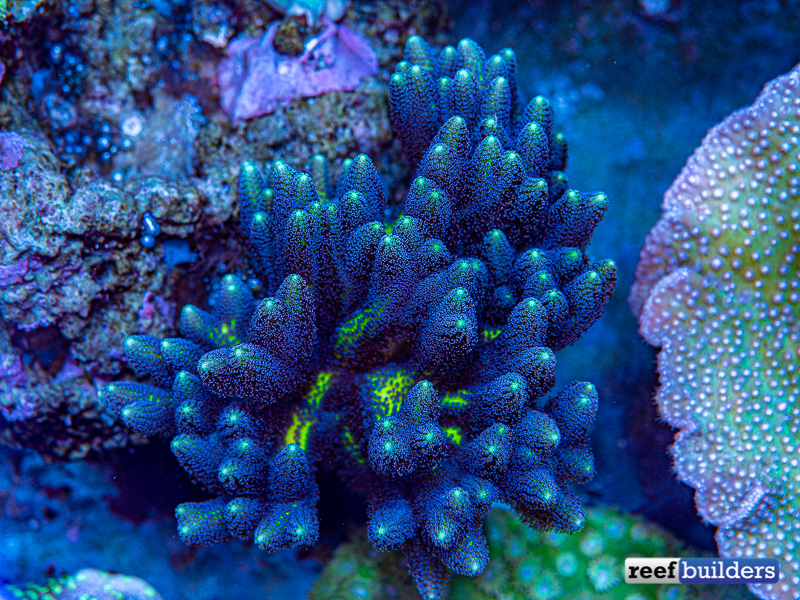
The branches of the Blue Zing are consistently of an intermediate size and thickness and the base coloration also falls somewhere between the bright green of the Bird of Paradise and the reddish brown of the metallic green birdnest. The most interesting aspect of the Blue Zing is the gradient of color from the tip to the base, of the skin and the polyps themselves which could be described as a ‘bluish green rainbow’.
If the Blue Zing can exhibit most of the colors of the two Seriatopora species that spawned it begs the question of whether even more colors could be incorporated into a a second generation cross with bright pink Seriatopora hystrix or deeper reddish pink S. caliendrum. We can’t overstate how much we cherish the opportunity to ‘study’ the Lazy Blue Zing hybrid and we’re very grateful to Lazy’s House of Coral for producing and documenting their experience as well as putting effort into sharing the offspring of their accidental experiment in coral hybridization.
